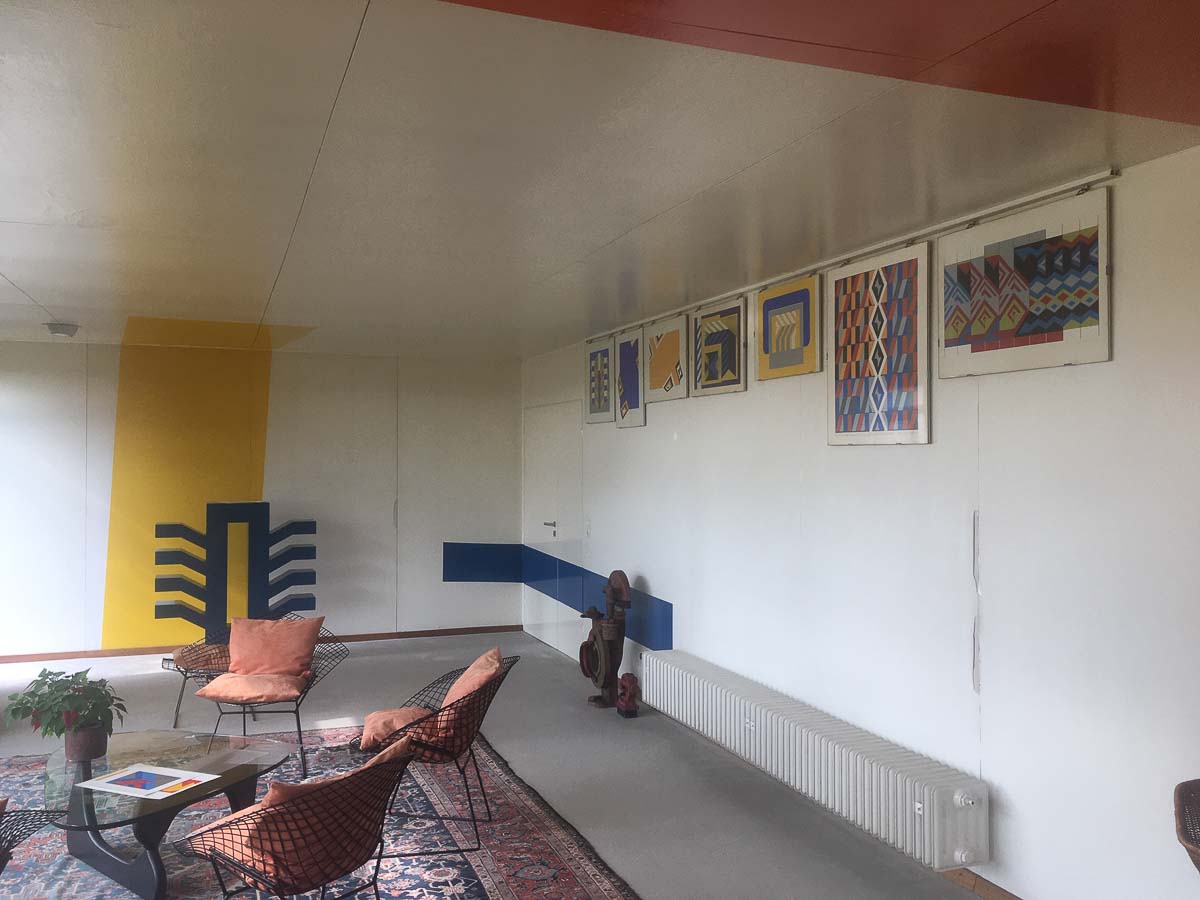Art is a whetstone for tolerance
Quote Otto H. Hajek
But Hajek's artistic design for the Mensa had to be fought for first. After visiting documenta III with his wife in 1964 and encountering Hajek's walk-in sculpture 'Frankfurter Frühling', the architect suggested the sculptor for the design of the Mensa. After consultation and in agreement with the structural engineering department, the artist was commissioned to create a design model.
The model and the elaborations had to be presented several times to the building commission at Saarland University at that time, because Hajek's architecture-related art was unusual and unfamiliar, graphically geometric, large, colorful and bold. To convince them, Otto Herbert Hajek, together with his wife Katja, first painted his color ways in the architect's private living room in red-orange, yellow and blue.

Ultimately, Hajek won the bid thanks to the persuasive efforts of his strongest supporter at the university, the institute's founder (1951) and widely known professor of art history, Professor J.A. Schmoll called Eisenwerth. Like the architect Walter Schrempf, he had encountered Hajek's art for the first time at documenta III and became a close friend of the artist.
In contrast, Hajek's intervention with sculpture, which tended towards architecture, pointed a new way. Hajek made color and moving form. I had known Mr. Schrempf for some time. He worked in the office of the university building authority. He had an interest in art history, and I in his buildings. So it happened that one day he invited me to come to his workshop, where they were working on the designs, on the model of the Mensa with Hajek. I was fascinated. Not, as at the documenta, a single sculpture into which one could enter, color paths to it, but now in a strict architecture of Schrempf a penetration with colors and forms, which even runs out into the so-called rose garden, into the landscape. Quote Schmoll aka. Eisenwerth
Even after Hajek's art was awarded, the architect had to repeatedly prove that the artist's fee did not exceed the 1.5% of production costs earmarked for interior design.



